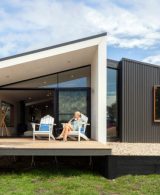Biophilic Design – A Nature Oriented Interior Design
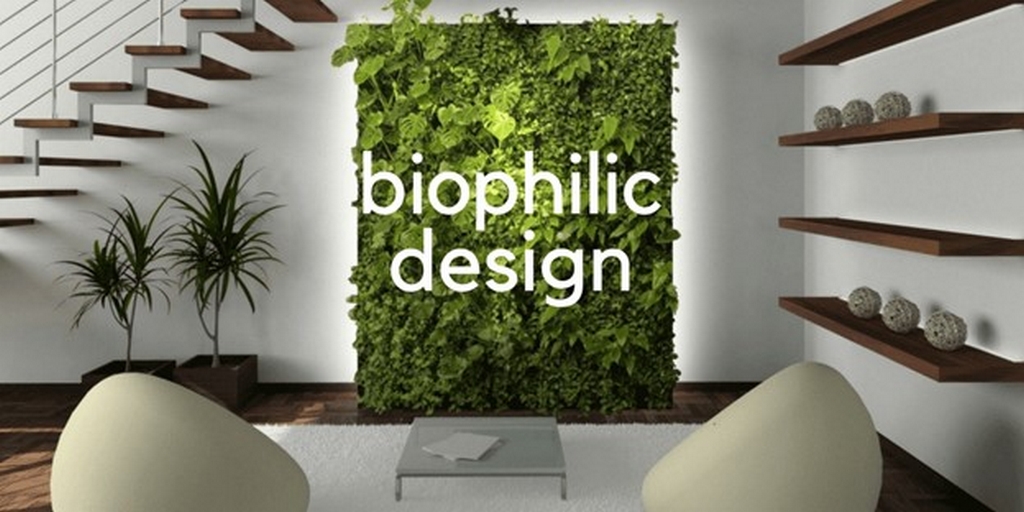
Biophilic design in an innovative way to create natural and comfortable environments for us to live, work and learn. It unconsciously brings the great outdoors into our constructed world by consciously including a nature oriented interior design. Interior Design begins with human experience. It considers the physical, mental and emotional needs of people and uses human centred approaches to address how we live today. Biophilia can be described as the passionate love of all living things. It is often defined as the idea of humans possessing an innate tendency to seek connections with nature. Today, we live in an urban world of technology and Industrial architecture, which sometimes can make us feel all but lost. This affinity towards nature is harnessed by including nature in our Interior Design. A continued research has proven that spaces or environments that imitate nature have positive effects on overall well being and health.
Relevance of Biophilic design today
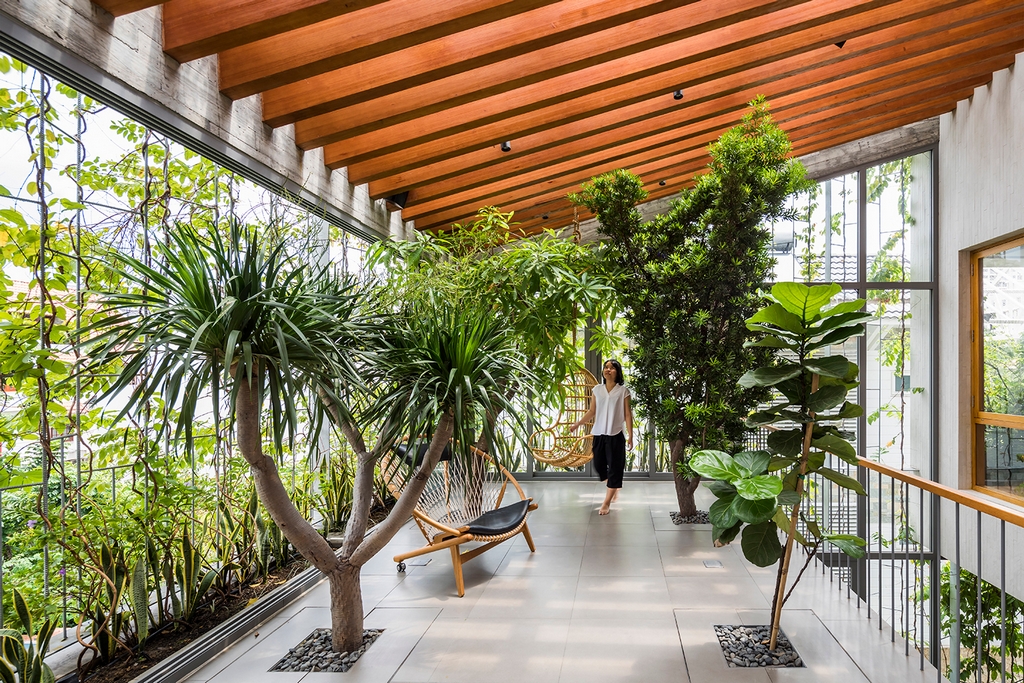
(Image Source: archdaily.com)
An environment that lacks natural elements can have a negative effect on productivity, well-being and health in the long run. How we feel where we work, learn, live or heal is greatly impacted by even simple changes to include nature in our spaces. Stress related illnesses, such as mental health disorders and cardiovascular diseases have been expected to be the two largest contributors to diseases by 2020 by the World Health Organization. From schools and hospitals to urban living spaces and workplaces, studies have shown that incorporating natural elements to interior spaces, can reduce blood pressure and stress, and increase overall well-being.
Benefits of biophilic design
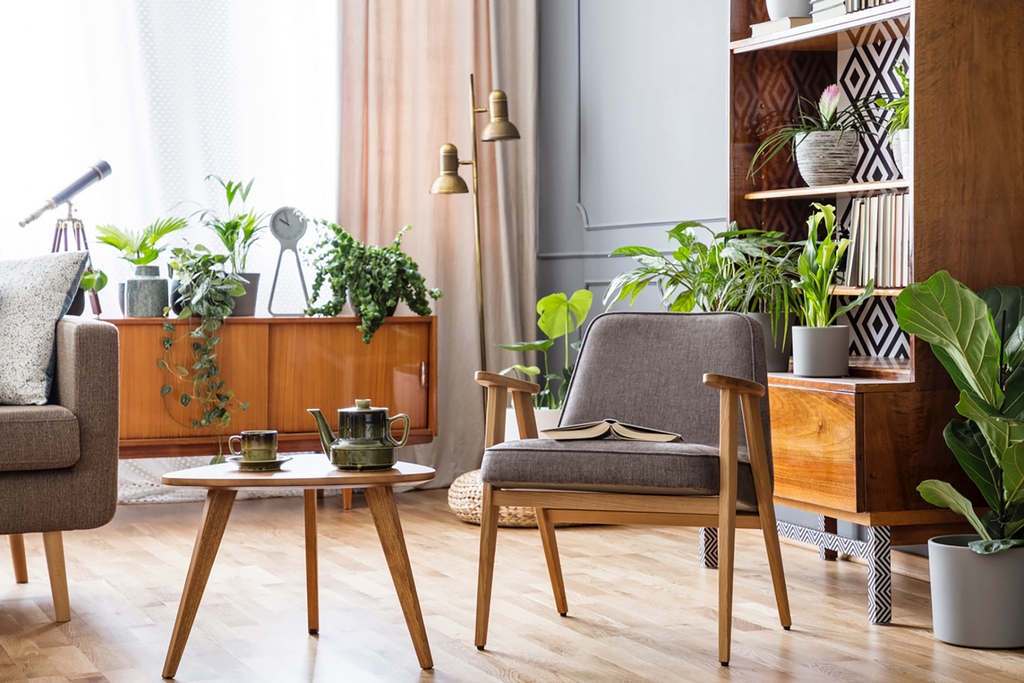
Hospitality Design with Biophilic elements (Image Source: loungelovers.com.au)
The benefits of Biophilic Designs are shown in the number of studies that have taken place over 35 years on the advantages of connection to nature in a built environment. In office designs, productivity, rates of well being and creativity can be increased with reduced absenteeism. In hospitality design, guests have a tendency to pay more for rooms with views of natural elements. Studies have also shown that children tend to show reduced impacts of ADHD (Attention Deficit Hyperactivity Disorder), increased rates of learning, improved concentration levels and attendance and improved test results. Biophilic elements at homes can make the living space calmer and more restorative and can also command higher property price. Given the many benefits of biophilia, it’s easy to see why many experts consider Biophilic design to be the future of interior design.
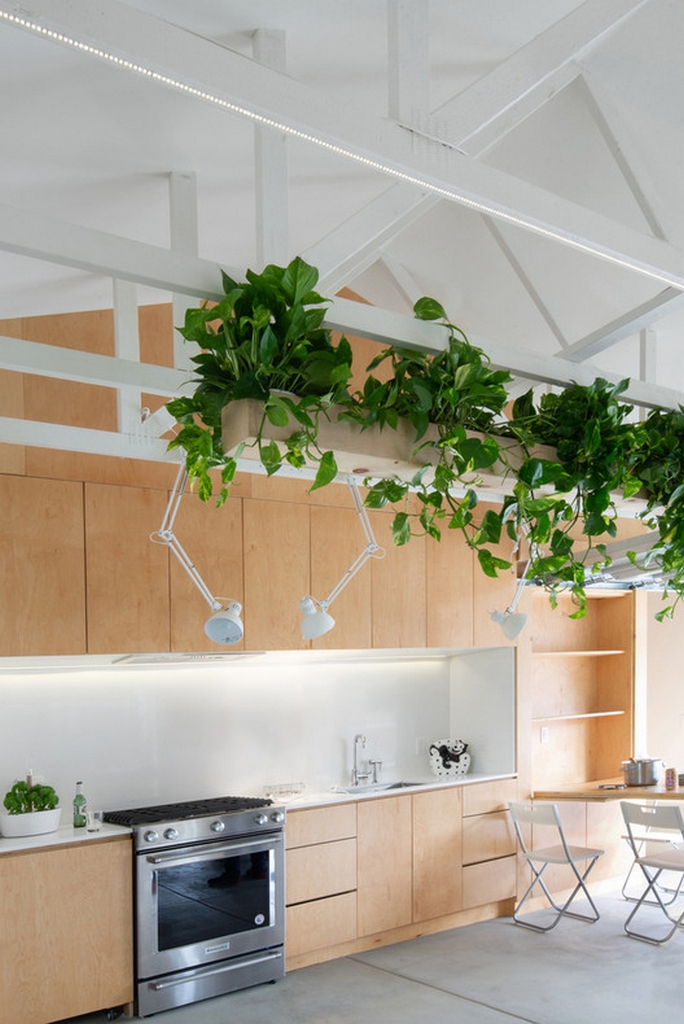
Home Space: Biophilic Design ( Image Source : H&M Homes )
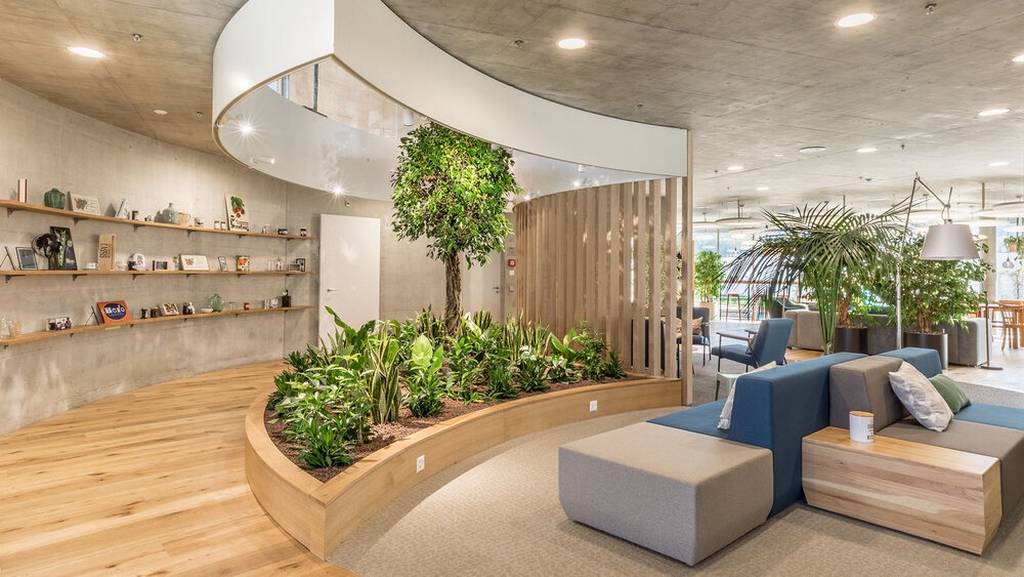
Office Space – Biophilic Designs Image Source: biofilico.com)
Usage of biophilic elements
The characteristics of the natural world like water, greenery, natural light or elements like wood and stone are brought in, in Biophilic design. Greenery when combined with daylight is much more effective where daylight not only illuminates the greenery but also has a number of other benefits, such as mood improvement.
An interior space can be made to resemble an outdoor environment by getting together, potted plants, hanging plants, living walls, vertical gardening, etc.
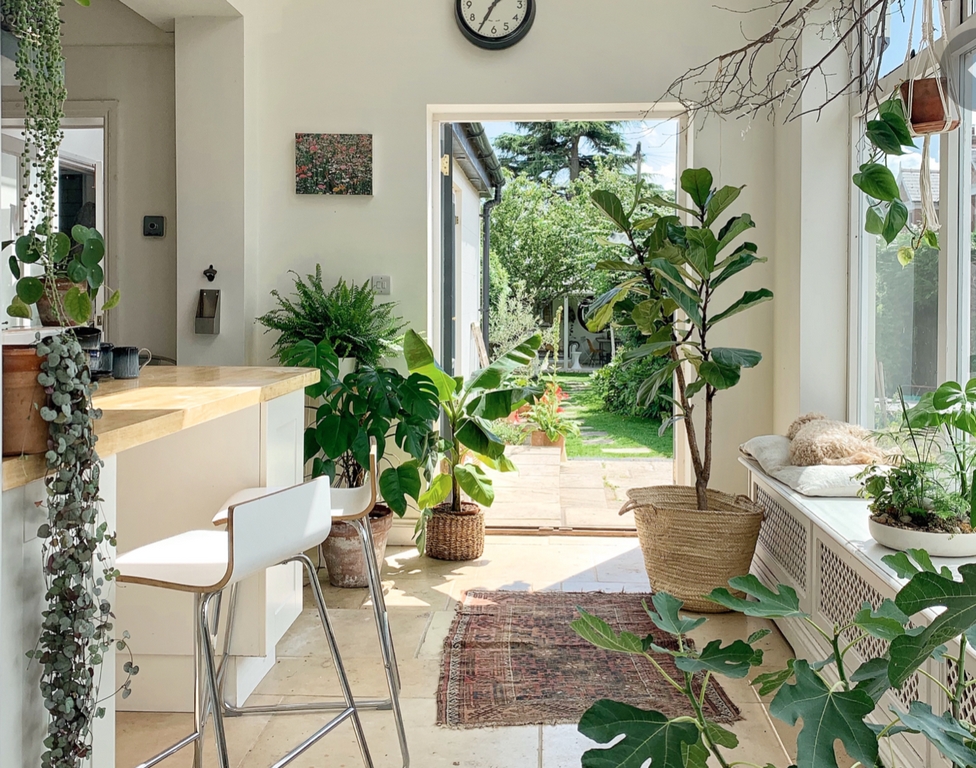
Usage of biophilia in Interior Space (Image Source: H&M Homes)
In places like hospitals and workplaces, a seating area, with reclaimed wood architecture, natural stone wall, bright lighting and a panoramic view of the outdoors will provide an inviting and calming effect to the occupants of the building.
Incorporating Biophilic elements like fireplaces and water features in seating areas are sure to bring a sense of serenity to the environment. The sounds of the crackling fire and flowing water even enhance the experience.
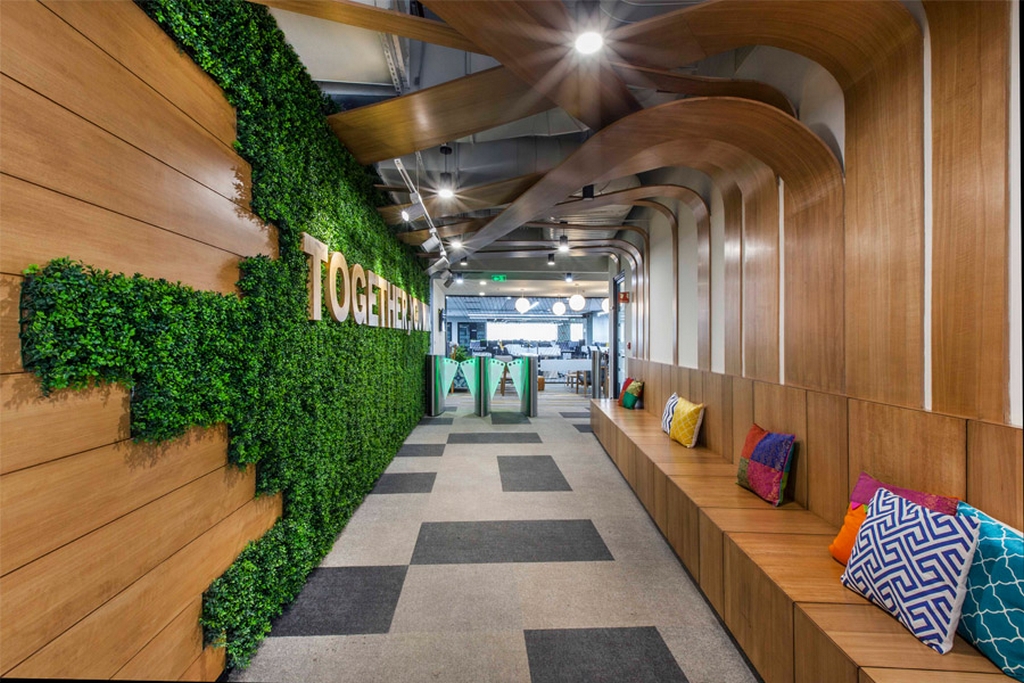
Biophilic Elements such as reclaimed wood used in Interior Spaces (Image Source: spacematrix.com)
Natural materials like reclaimed wood with texture and character often tend to make the occupants feel more closely with nature. It is also one of the most flexible green building materials. Reclaimed wood is even pleasing to the eye and it amplifies the existing aesthetic of a space, adding elegance and sophistication. It is not just the presence of natural elements that’s vital in Biophilic designs, but also factors such as lighting, air quality and views of nature that play their roles in the overall look and feel of the space.
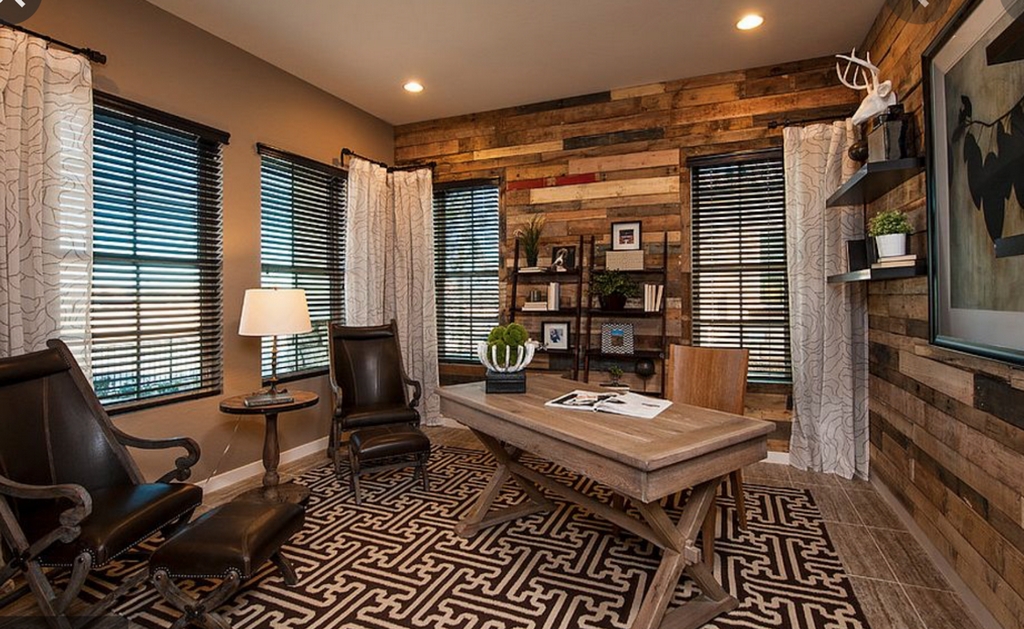
Wooden Elements in Biophilic Designs
Conclusion
Ultimately, biophilic designs are all about a nature oriented Interior Design process and focuses on the psychology and physical well being of people. In today’s world of increasingly urbanized cities, biophilic designs puts forth a more humanistic approach to design. It celebrates the idea of living, working, learning and healing with nature. They are also an approach towards sustainability, which helps in being socially-responsible. It is a fact that occupants of biophilic spaces and people working in such spaces feel happier and more satisfied. Especially when biophilic designs elements stimulate more than just our visual senses, it is the best way to meet the innate need of us humans, of longing for a connection with nature.
Priyanka Chanbasappa from Diploma in Interior Design 2020 batch
#jdinstituteoffashiontechnology #jdinstitute #interiordesigning #diplomaininteriordesign #biophilicdesigns #natureorientedinteriordesign #sustainability #interiorspaces #interiordesigner #officespaces #homespaces #futureofinteriordesign #biophilicelements








